This Under-the-radar City Is a Must-visit for Some of Mexico's Best Food and Coolest Crafts
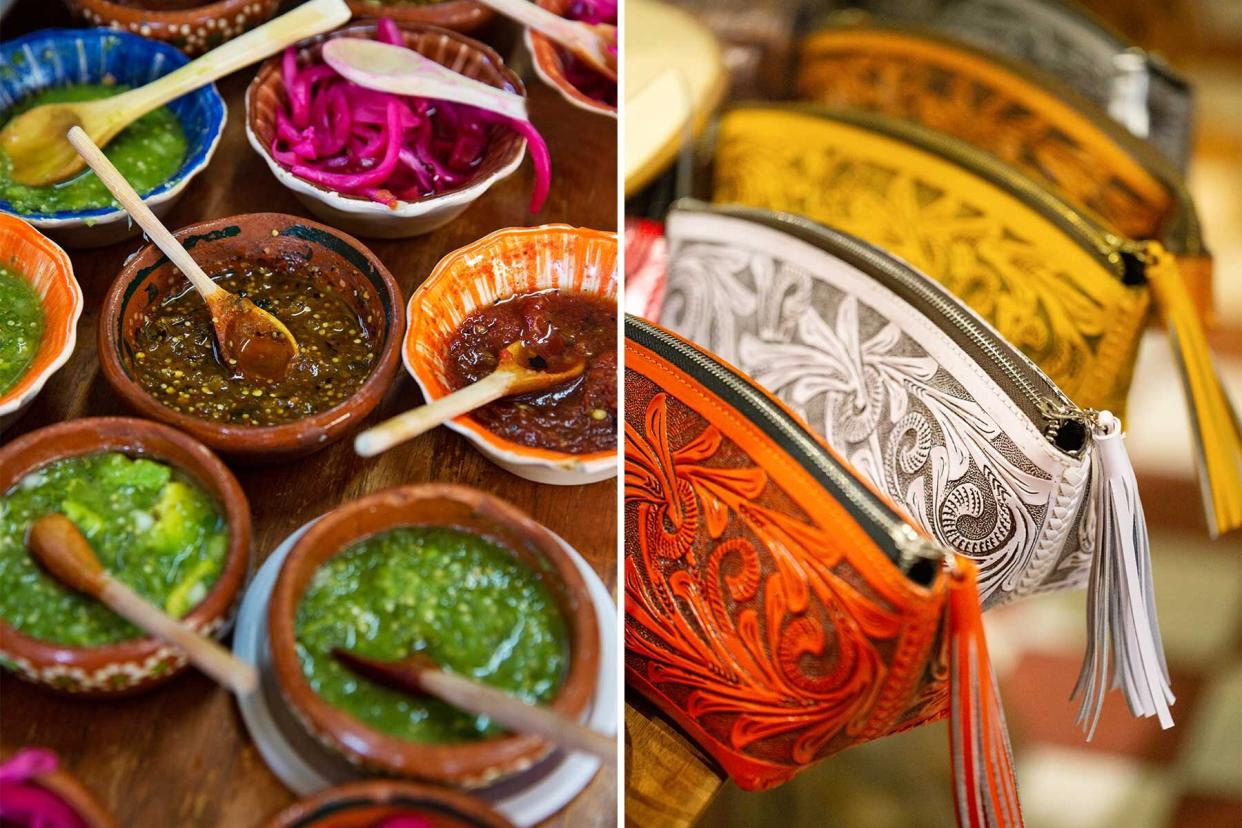
Alexandra Farias From left: Salsas at Birriería Las 9 Esquinas restaurant; leather pouches at the flagship boutique of designer David Luna.
There's a forest in Guadalajara where the mud tastes like white chocolate and matcha. Crumbled pistachios climb over the mire like neon green moss, making a bed for fuzzy sprouts of spearmint and peppermint and ripe blueberries as fat and glossy as sapphires. Red-capped meringue mushrooms shade the miniature woodland like beach umbrellas. They taste like pine. The scoop of ice cream alongside them, like eucalyptus. It's ivory, speckled, and egg-shaped, like something about to hatch.
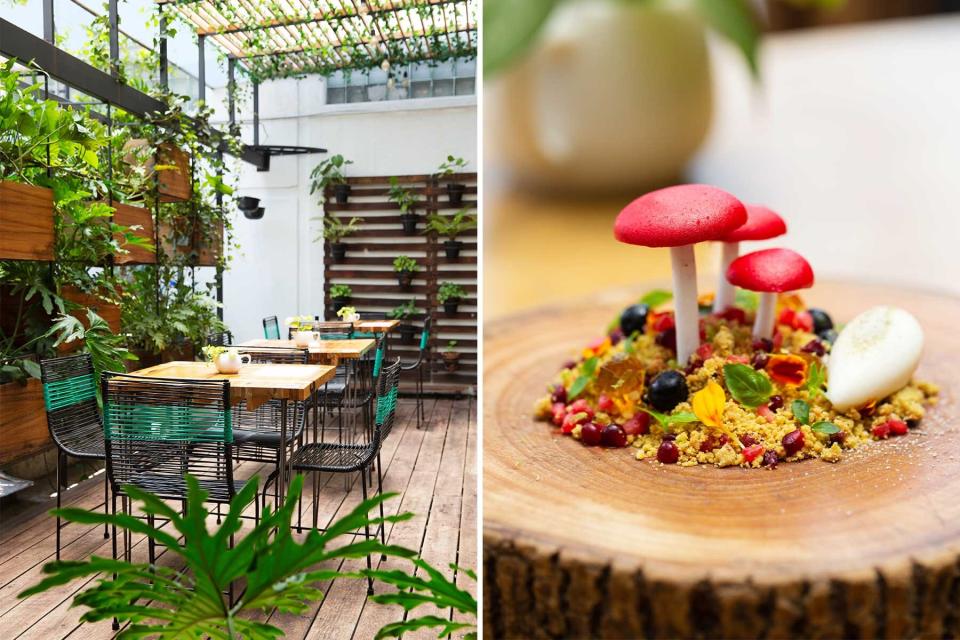
Alexandra Farias From left: A seating area inside La Postrería café; the whimsical “El Bosque” dessert at La Postrería.
"El Bosque" and the other bewitching desserts from Fernanda Covarrubias and Jesús Escalera, the pastry chefs at La Postrería, are among the many reasons to go to Guadalajara. The city is Mexico's second-largest in population and in business traffic, thanks to the vital tech industry that has turned it into the nation's answer to Silicon Valley. It's also the capital of Jalisco, the state famous for mariachi and tequila and the coastal resorts of Puerto Vallarta.
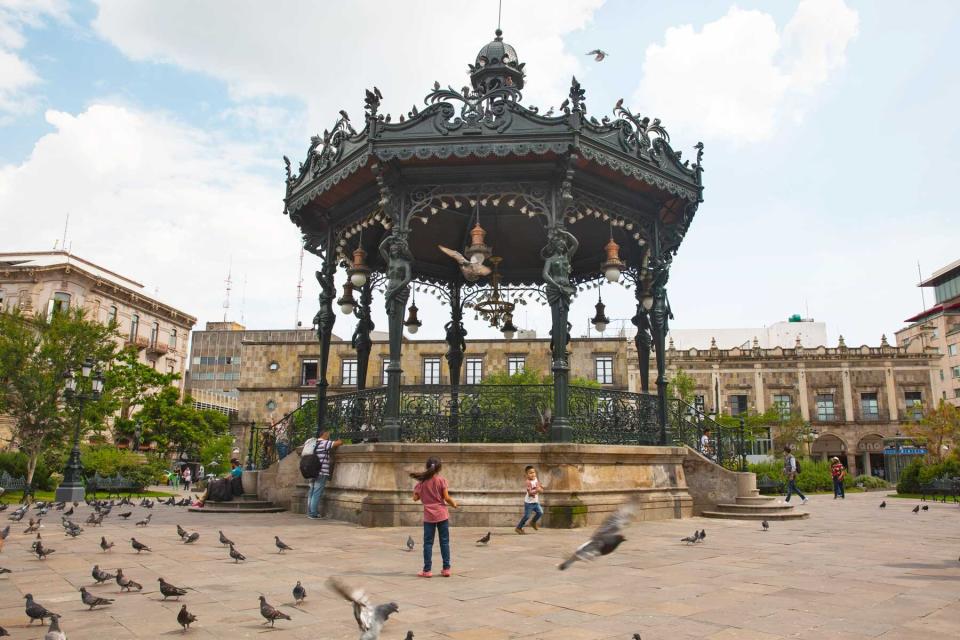
Alexandra Farias The bandstand at Plaza de Armas
Despite all those distinctions, Guadalajara hasn't gotten its star turn with American visitors yet. Mexico's nearness, affordability, and cultural wealth invite constant discovery, but sometimes, chasing the next unsung winter surf colony. My wife and I wound up there, checking in to the chic Casa Habita in the leafy Lafayette neighborhood, because of a canceled flight.
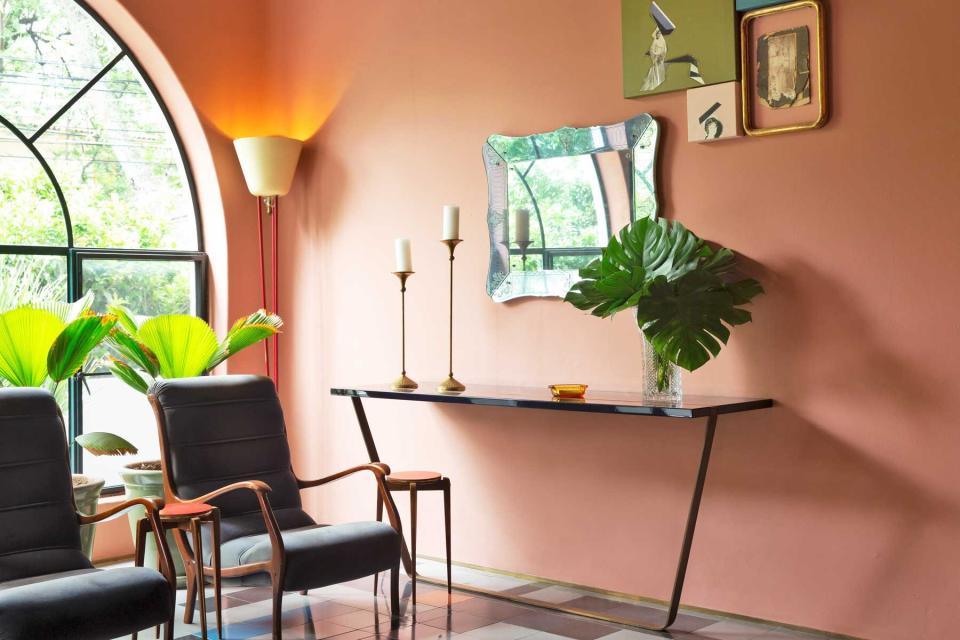
Alexandra Farias The lobby at Casa Habita.
"Can you believe you would have missed this?" asked my guide, Germán Salas, the next day as we walked through the neighboring city of Tlaquepaque, 15 minutes from downtown Guadalajara. Sweeping his arm, he gestured to the breezy rooftop terrace of 1910 Cocina de México, then to the other colorful restaurants and shops along cobblestoned Calle Independencia, a pedestrian-only arts haven.
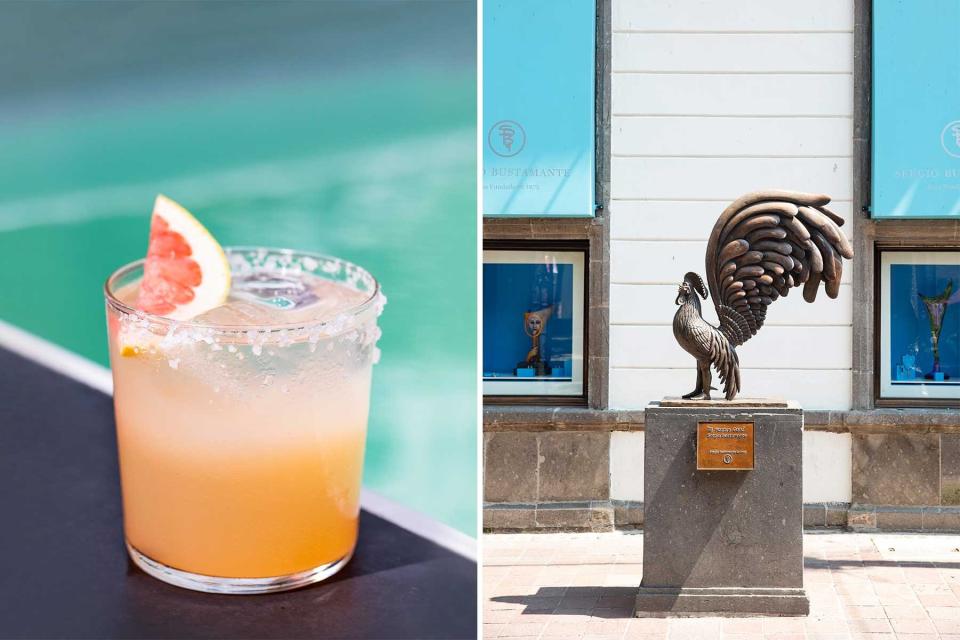
Alexandra Farias From left: A mezcal Paloma at Casa Habita; "El Hombre Gallo" sculpture by Sergio Bustamente, in front of his gallery in Tlaquepaque.
I had to admit I could not believe it. The sense that some benevolent conspiracy between the universe and a low-cost Mexican airline had rerouted us to Guadalajara had me pinching myself on more than one occasion. Like when I snatched the last lime croissant at Antonia Panadería, an improbable truce-broker between tropical humidity and laminated pastry. Or when I had the extravagantly spired Guadalajara Cathedral, the city's most iconic landmark, nearly all to myself.
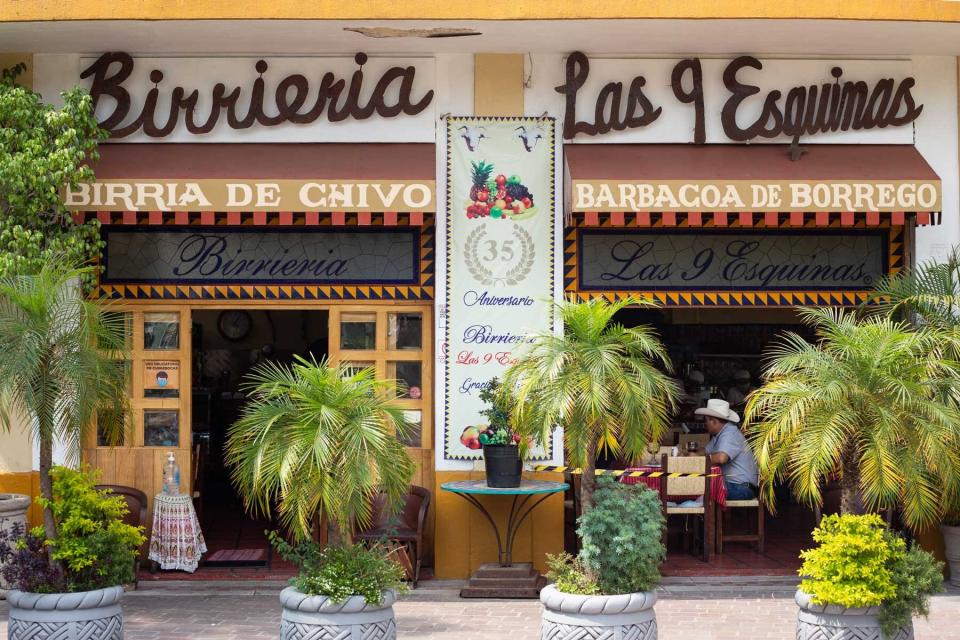
Alexandra Farias Birrieria Las 9 Esquinas.
Or while I was watching abuelas in white smocks and chef hats flit like finches around the tiled open kitchen at Birriería Las 9 Esquinas, where the ancestral specialty is birria de chivo—succulent braised young goat served in crocks of smoky consommé. Delirious, I stumbled out of that place and onto a plazita where a man in a cream-colored cowboy hat was flexing his marbled jade accordion.
But back to Salas, who shared his story over 1910's deceptively meaty hibiscus tacos. He's Costa Rican, but married a Tapatío (a Guadalajara native) and followed her here. Formerly a journalist moonlighting as a tour guide, he started his Tlaquepaque art walk in 2018, and it has become so popular he's now more of a tour guide who moonlights as a journalist. The man spoke in rapt metaphors: "Guadalajara is a pearl. Tlaquepaque is a fantasy."
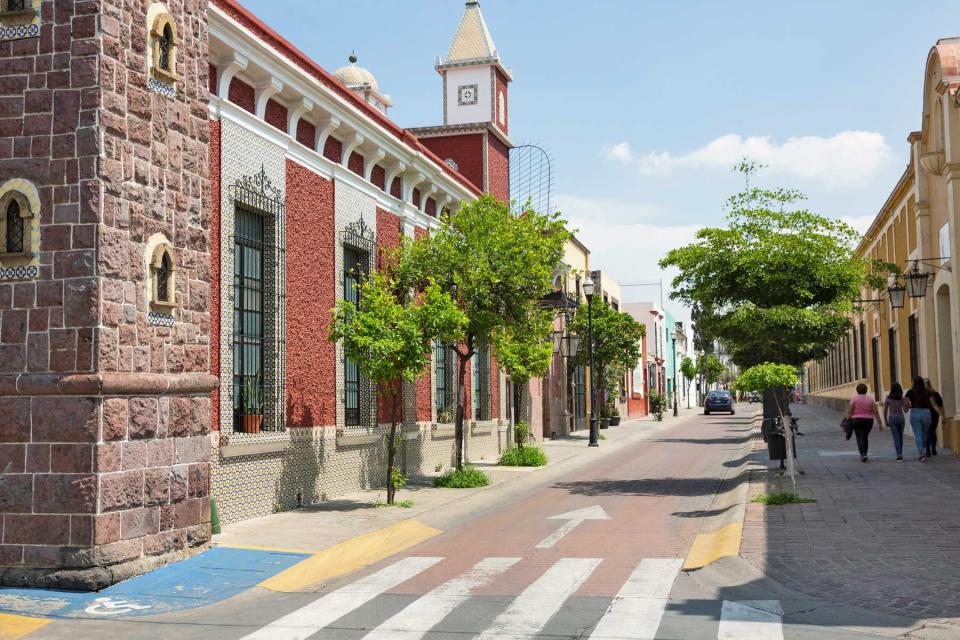
Alexandra Farias One of the colorful streets in Tlaquepaque, a suburb of Guadalajara.
I found the latter statement to be especially true. The city is a member of Mexico's Pueblos Mágicos, a national designation given to towns considered to have high cultural importance, as a way to help fund preservation efforts. The gorgeous old peach- and persimmon-colored buildings of its Colonia Centro are inhabited by tamarind-taffy makers like Nuestros Dulces, craft merchants like Mona's, and artists like Sergio Bustamante, whose surreal humanoid sculptures' inverted-triangle heads represent the contours of Mexico. When Salas noticed my wife's tooled-leather handbag—something she bought half a decade ago in Todos Santos—he arranged for her to meet its designer, David Luna, whose flagship shop is coincidentally on nearby Calle Independencia.
Many people making interesting things happen in Guadalajara are locals who lived abroad and then came back. "I was eighteen when I left because there wasn't anything I wanted to learn from what was going on here," said Francisco Ruano, the chef behind Alcalde, widely regarded to be Guadalajara's best restaurant. "I was offered a really good position in Spain, but I felt like I had to come back and do something of my own."
Ruano, who opened Alcalde in the Vallarta Norte neighborhood in 2013, calls his style cocina franca and uses simplicity and sincerity as his guiding principles. At dinner, that translated to dishes like burrata wreathed in purslane and peppermint leaves and a round, featherweight tamale in green-chile salsa, complemented by easygoing service and flowing Baja reds.
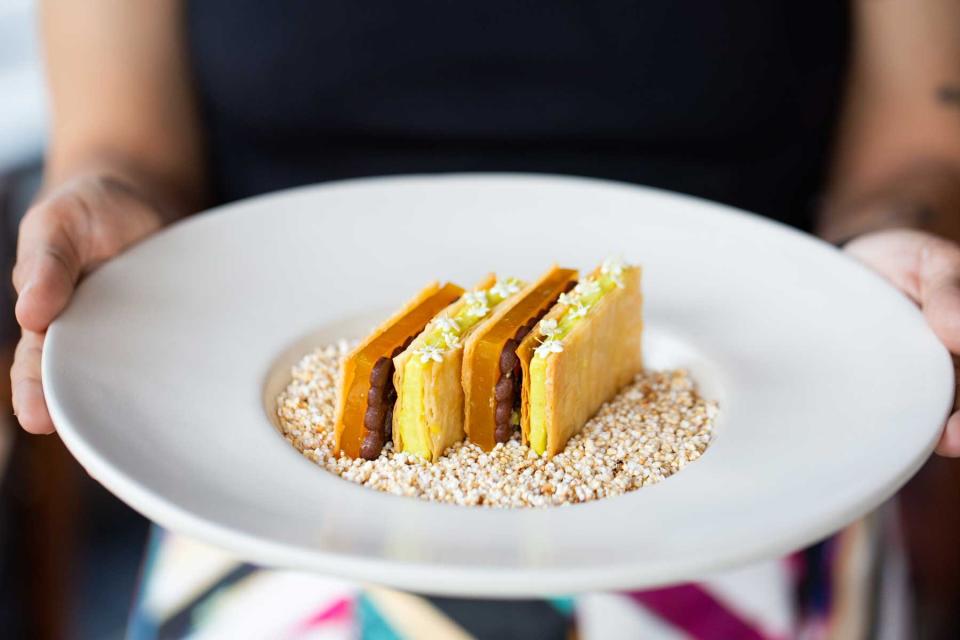
Alexandra Farias The mil hojas pastry at Alcalde, a restaurant in Guadalajara’s Vallarta Norte neighborhood.
Like Ruano, La Postrería's Covarrubias left Guadalajara to cook in Spain, where she met Escalera, who's from Utrera, near Seville. "We always had this dream to open a restaurant with just plated, Michelin-style desserts," she says. "Just go straight to the sweet place."
Housed in the old French restaurant where Covarrubias waited tables during college, their sweet place is a polished little laboratory with a rooftop garden, a demonstration classroom, and a coffee bar. Covarrubias, Escalera, and six pastry chefs work in tandem in the open kitchen, piping meringue kisses onto individual passion-fruit pies, molding mandarin cheesecakes into handheld trompe l'oeil oranges, and fussing over more than a dozen other complex desserts for either dine-in service or a takeout pastry case.
Covarrubias and Escalera started their venture in 2013, when they were just 24 and 26, respectively. They considered opening in Spain, but the pull to give something back to the city was greater. "In our circle of Mexican chefs, you always want to go work in another country because it feels like you made it," she said. "But if no one comes back, then nothing changes."


